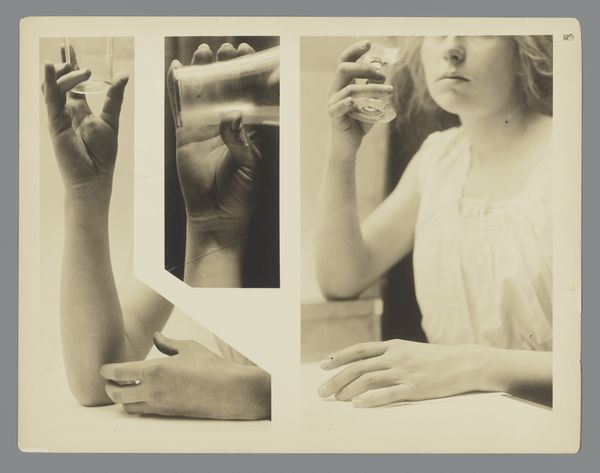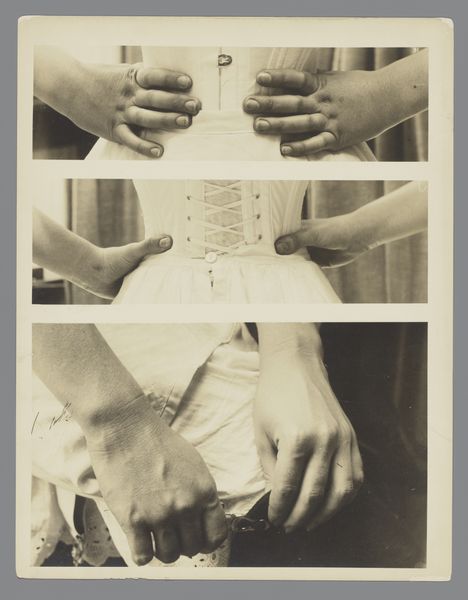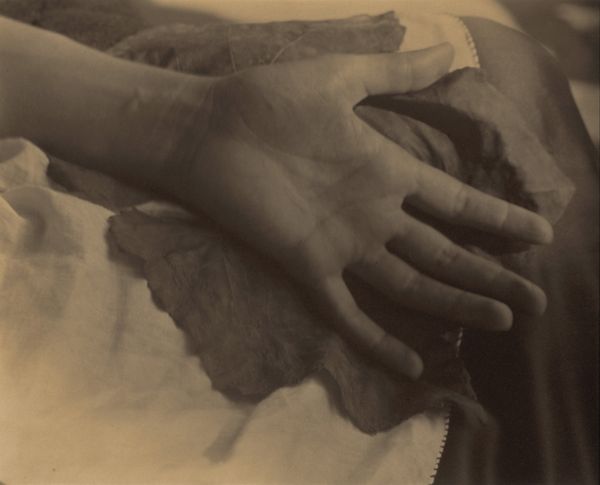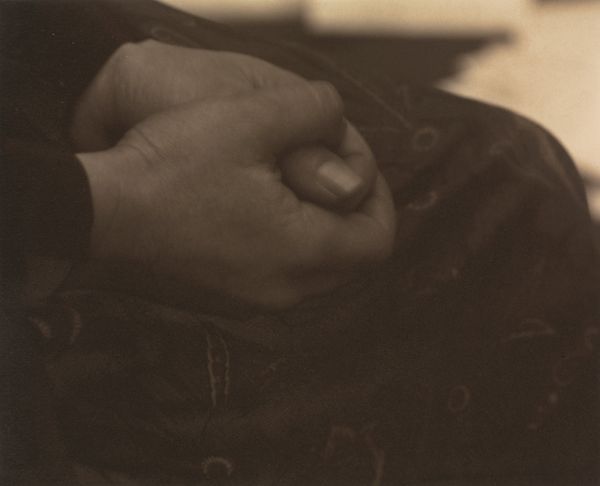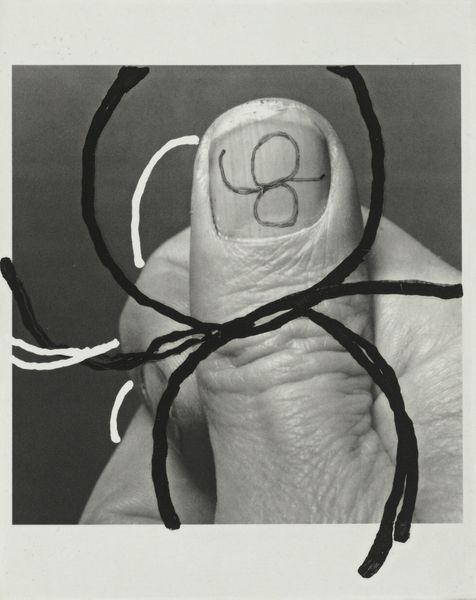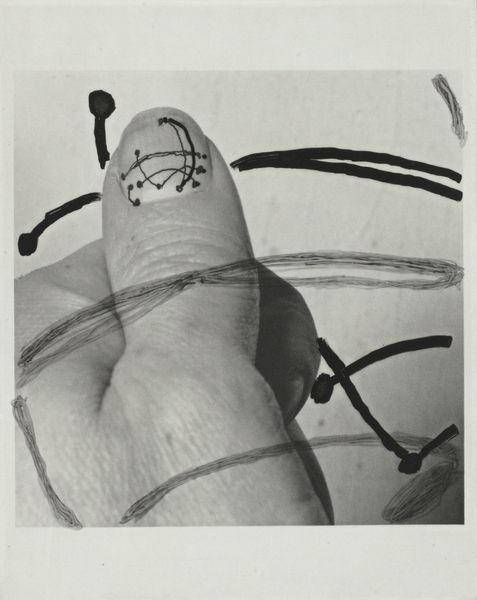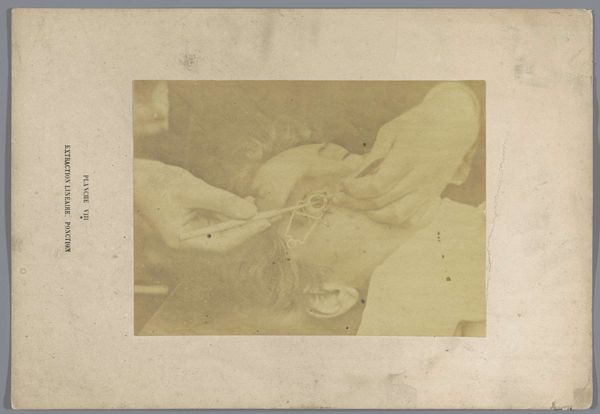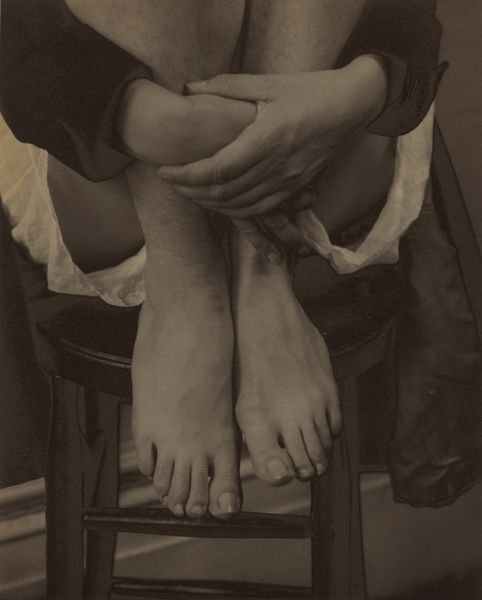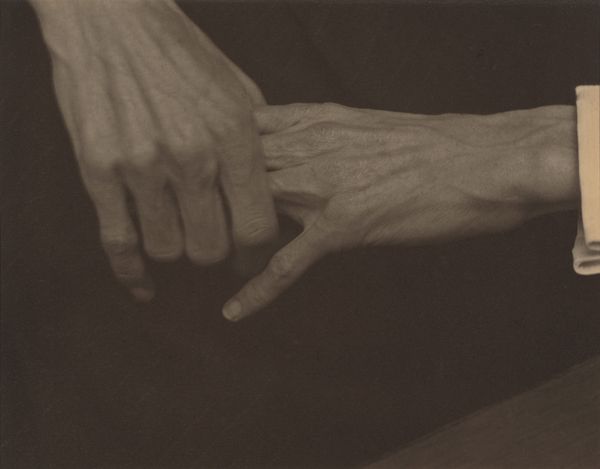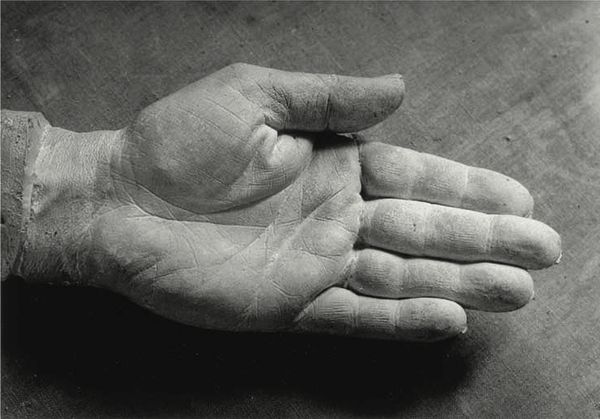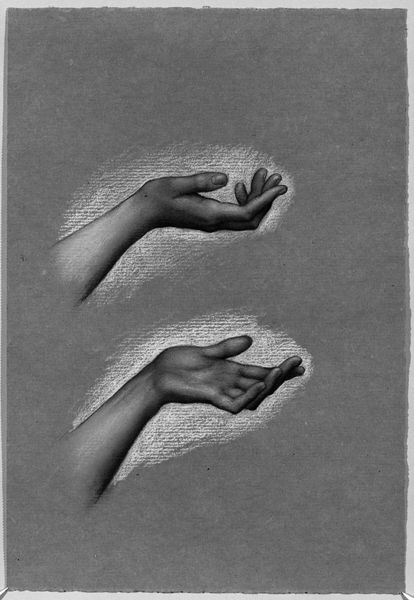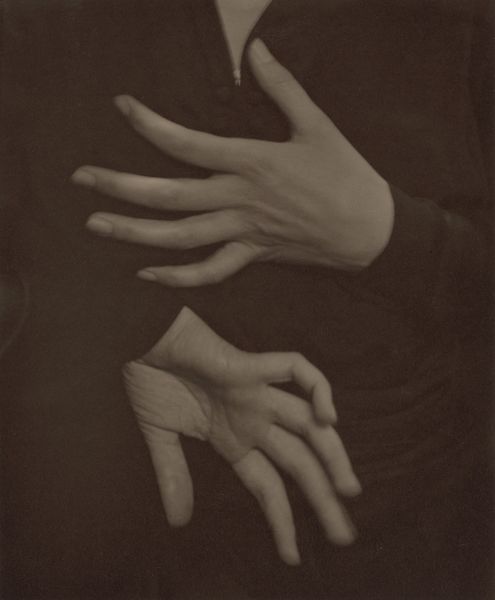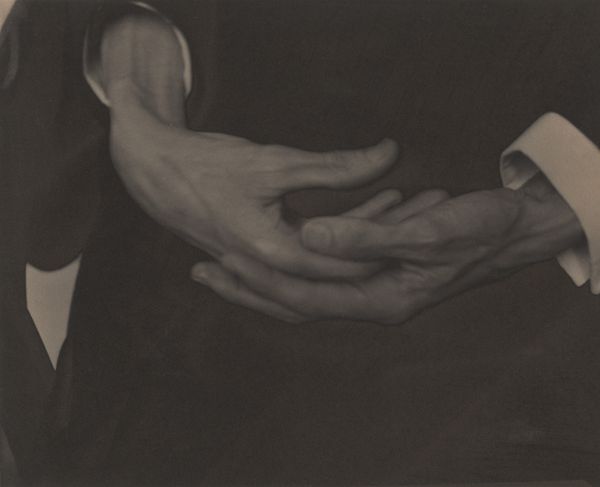
photography, gelatin-silver-print
#
portrait
#
still-life-photography
#
photography
#
gelatin-silver-print
#
line
Dimensions: height 323 mm, width 223 mm
Copyright: Rijks Museum: Open Domain
Editor: Here we have "Hands in Lap with Cord," a 1912 gelatin-silver print photograph by an anonymous artist. It features two cropped views of hands holding a cord, one stacked over the other. The tonal range creates a slightly unsettling mood for me. What do you see in this piece? Curator: Focusing on the formal elements, the photograph presents a study in contrasts. Notice how the soft curves of the hands and arms are juxtaposed with the linear precision of the cord. The stark lighting further emphasizes this dynamic, creating strong lines. How does this contrast influence your reading of the image? Editor: I guess it does highlight the tension, or maybe a vulnerability, in the hands... almost as if the cord is restricting them, but they also appear to be deliberately holding it. Curator: Precisely. We can also consider the diptych format – the repetition of the hands encourages a comparative analysis of the hand positions and the varying tensions within the cord. The limited palette—restricted primarily to grayscale tones—forces us to concentrate on these shapes and textures. It asks us to reflect on whether it is an objective record, or is something else being represented. Editor: It's interesting how focusing on just the form opens up so many more possibilities than I initially thought. Curator: Indeed. Analyzing the composition's intrinsic elements reveals the artist's careful manipulation of form and light to communicate more than just a representation of hands and cord, but about the interaction and interdependence of these elements. Editor: It's like the subject isn’t as important as the way it’s shown. Thank you! Curator: A fitting observation. Form dictates function here, informing how we ultimately perceive the work.
Comments
No comments
Be the first to comment and join the conversation on the ultimate creative platform.
